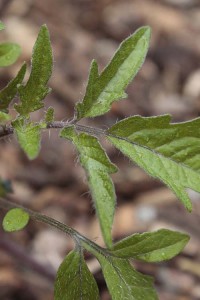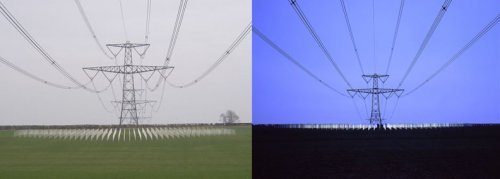One of the carnivorous plant lists I’m on has been buzzing a bit lately about an article that appeared in the Botanical Journal of the Linnean Society, “Murderous plants: Victorian Gothic, Darwin and modern insights into vegetable carnivory.” (See the abstract: here.) What really got things going was a sensationalized story in the London Telegraph, with the catchy title: “Tomatoes can ‘eat’ insects!” (The exclamation point is mine, but it seemed right for many titles published by the Telegraph.)
The basic premise is that hairs on tomato plants can catch and kill some small insects. The dead insects fall to the ground and nourish the plant. The botanical technique is called “passive carnivory,” in opposition to the active carnivory practiced by plants like sarracenia that have means to both capture and digest prey.
It’s kinduv a stretch, pulling a number of plants into what before was a select club of carnivores. The Telegraph article mentions “petunia, ornamental tobacco plants, some varieties of potatoes and tomatoes, and shepherd’s purse, a relative of cabbages.” The Linnean Society abstract goes on to mention plants “such as Stylidium (Stylidiaceae), some species of Potentilla (Rosaceae), Proboscidea (Martyniaceae) and Geranium (Geraniaceae), that have been demonstrated to both produce digestive enzymes on their epidermal surfaces and be capable of absorbing the products.”
That got the carnivorous plant folks to stretch the definition further. What about New Zealand’s bird-eating para ara tree? Maybe even the California fan palm with its hazardous sawtooth petioles? While I’m at it I might as well add one of my own nominations: eucalyptus, the Australian widow-maker. After our windstorm Monday night I noticed all sorts of eucalyptus branches on the ground. If you were around when some of the eight-inch-thick branches fell off, you’d be on your way to being nourishing compost for the plants!





 Larry and Debby Kline. Encryption (The Electric Fields of California, Site # 4) Sears Point Farming Company
Larry and Debby Kline. Encryption (The Electric Fields of California, Site # 4) Sears Point Farming Company [
[ 